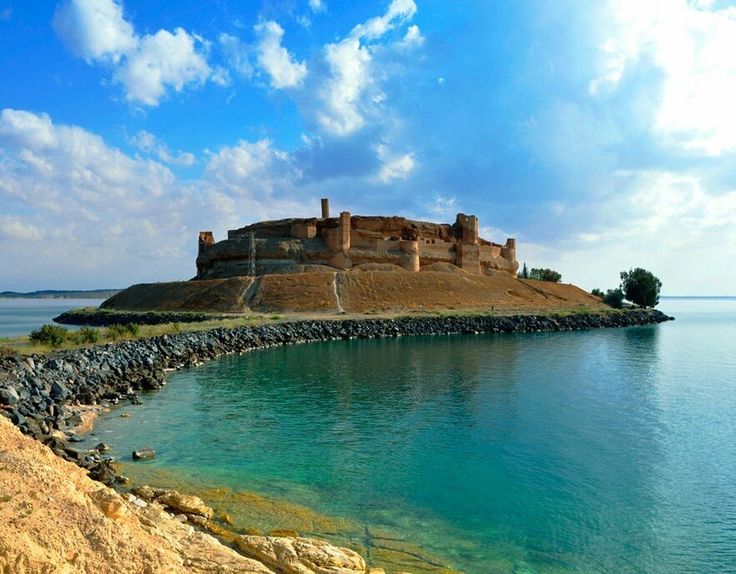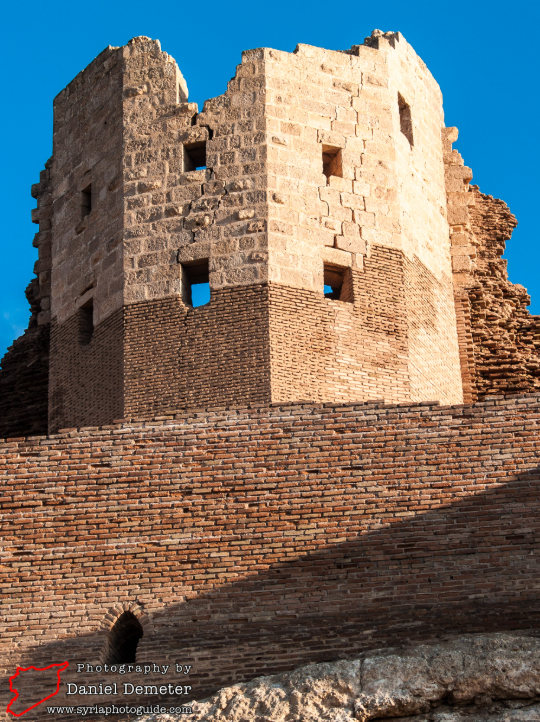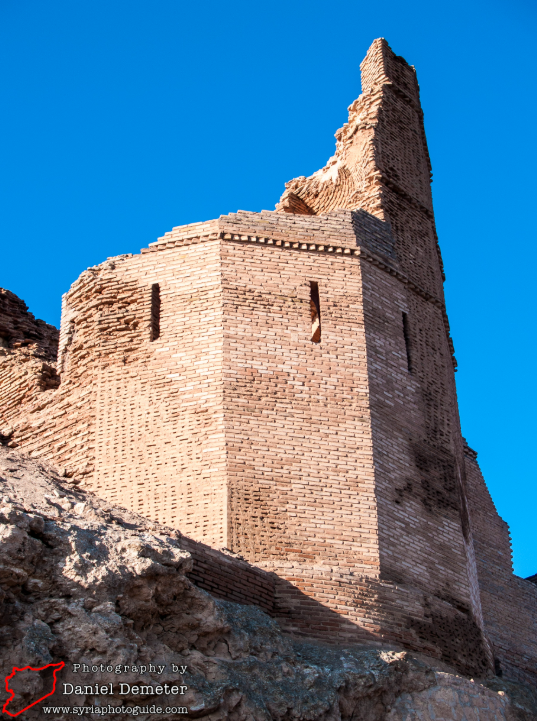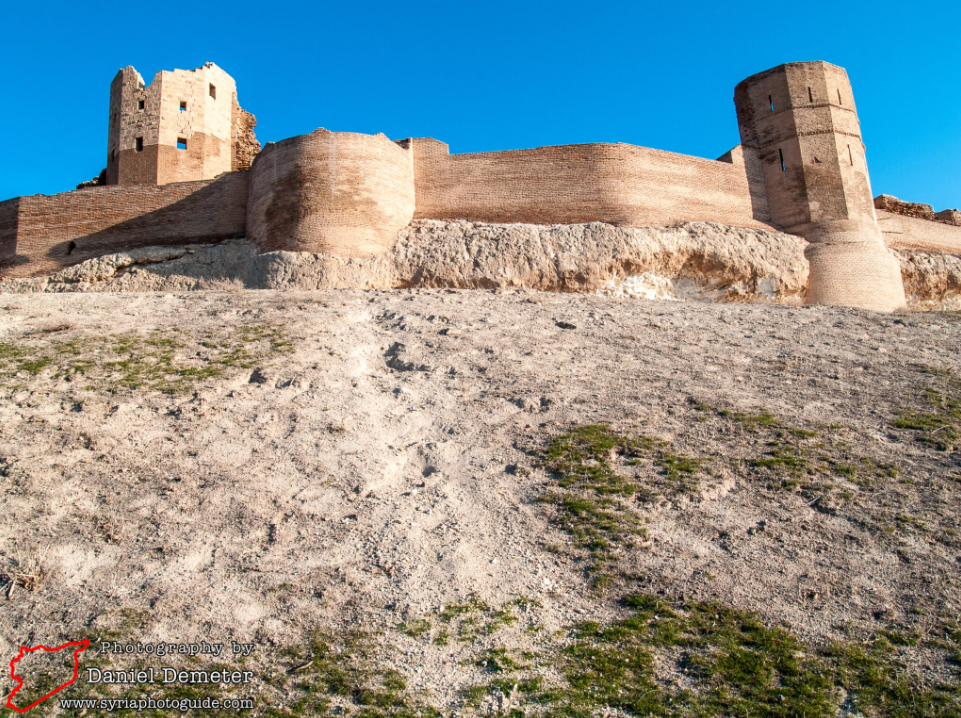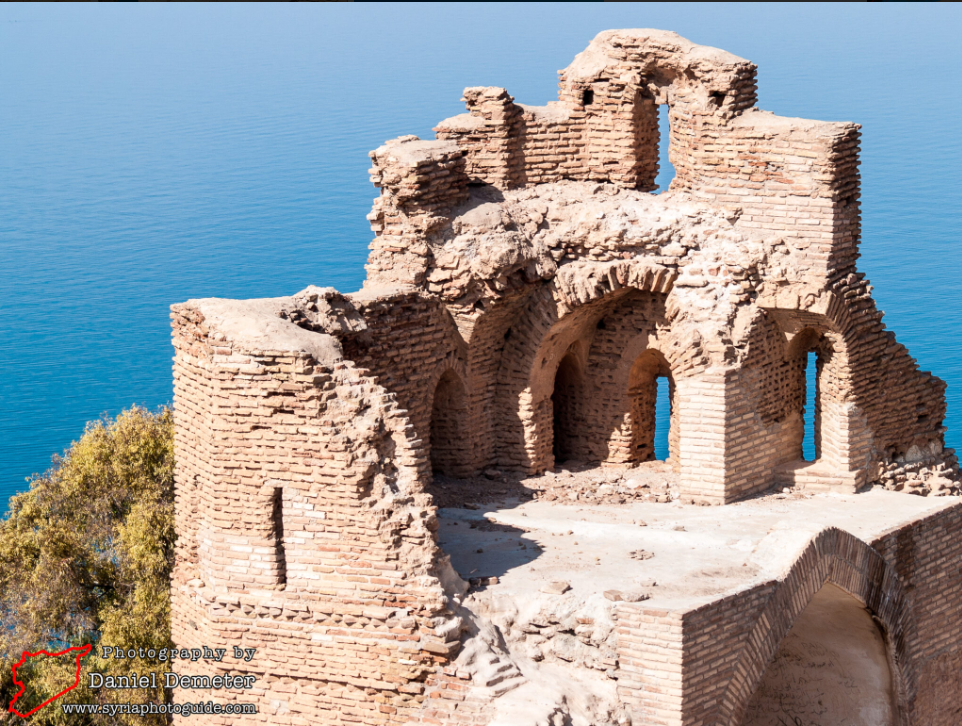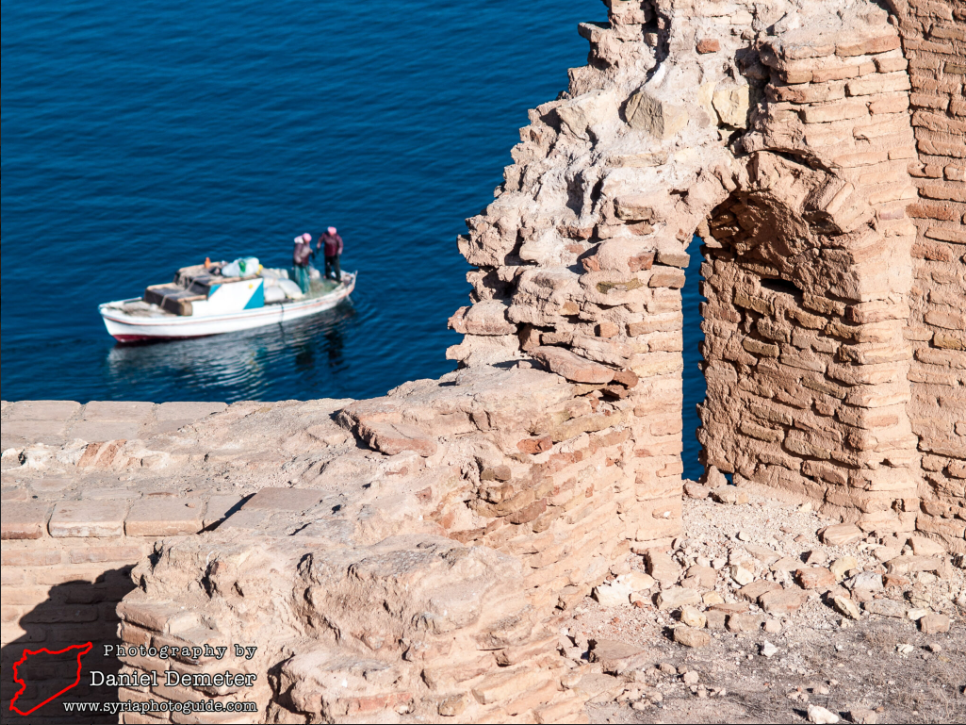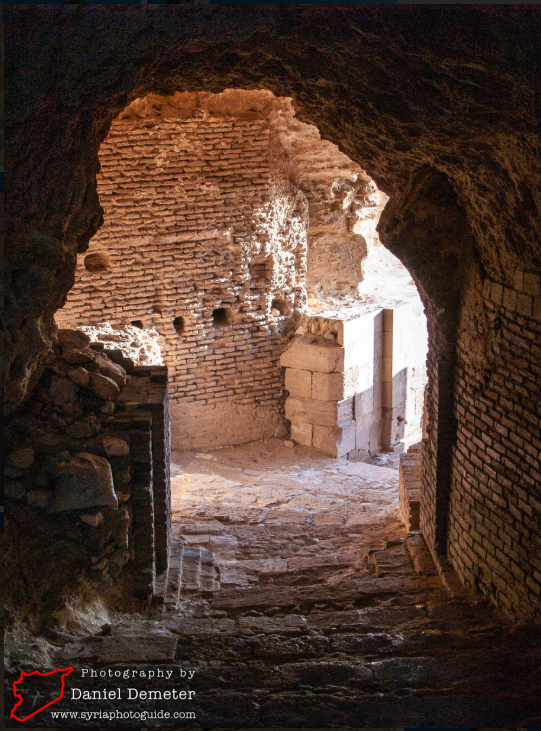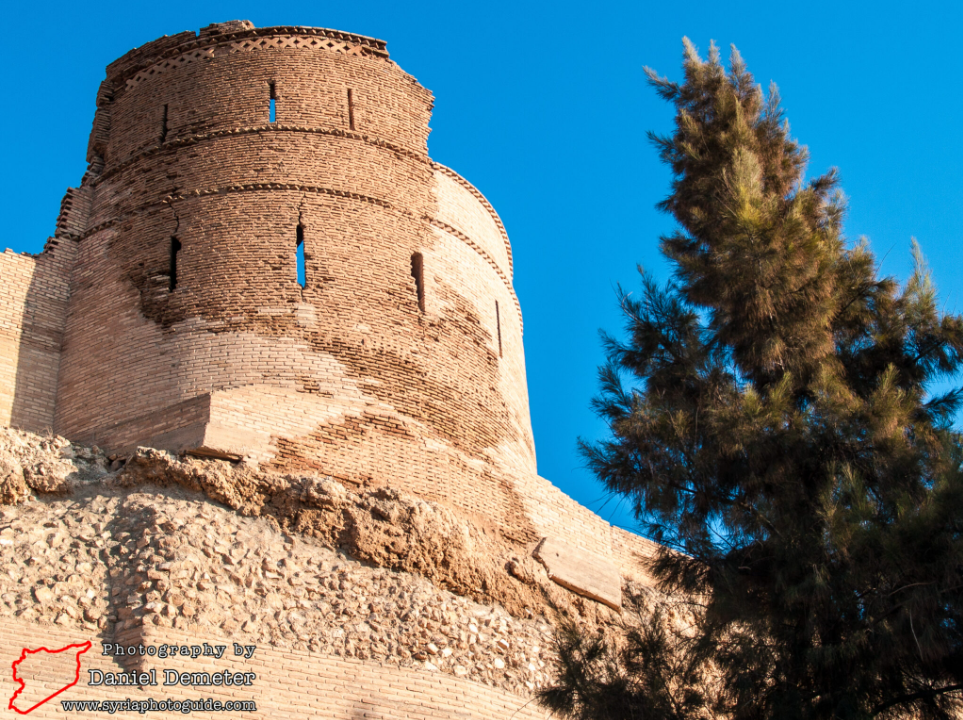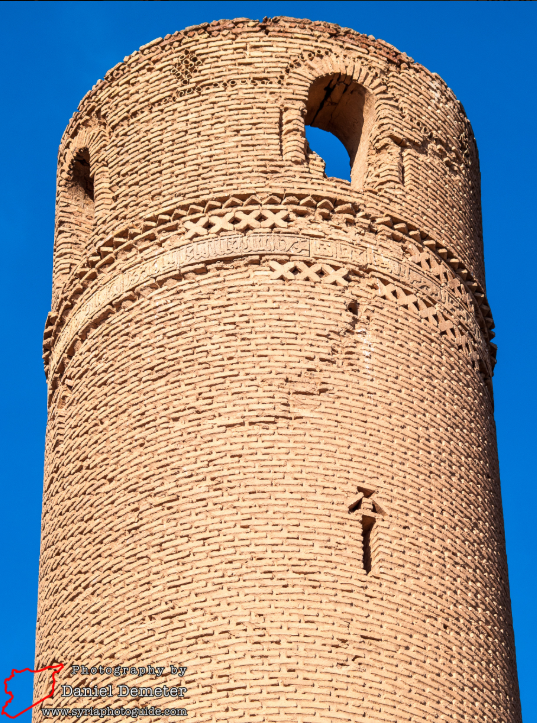Jaabar Castle is an Ayyubid-era fortress located on what was once a hilltop site that originally stood on a natural island before the formation of Lake Assad. It was established by the Seljuks around 1080 CE and underwent multiple phases of fortification. Nur ad-Din Zangi reinforced its defenses, followed by expansions carried out by Salah ad-Din al-Ayyubi (Saladin).
The castle is distinguished by a water-filled moat that formed after the construction of the Euphrates Dam, in addition to two cylindrical towers—one of which houses a small mosque and a reception hall—reflecting its unique defensive and architectural character.
In the early 1980s, the castle underwent extensive restoration through a joint effort between Syria and UNESCO. This included the rearrangement of the stone walls and the development of a tourist walkway, contributing to its preservation and classification among protected heritage sites.
Today, Jaabar Castle stands as a striking visual landmark for visitors to the lake and serves as an outstanding example of Islamic military architecture intelligently adapted to a riverine environment—making it a unique destination well worth exploring.

